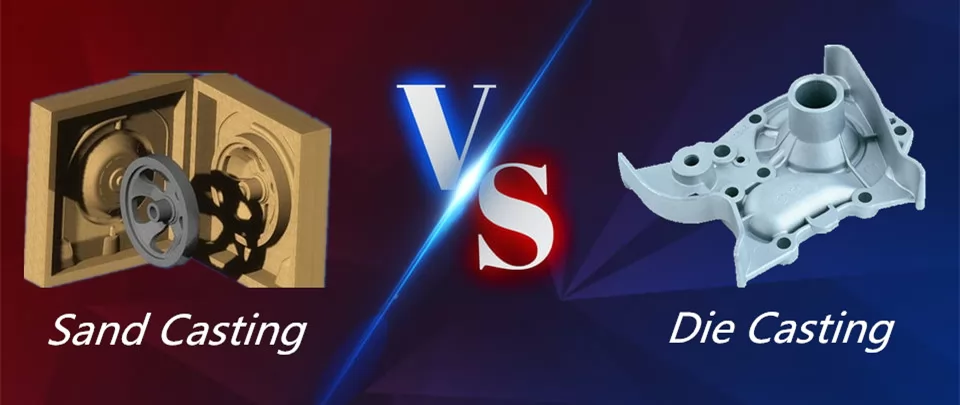
A casting is created by pouring molten metal into a mold to produce a specific shape. The mold is removed, and the component is finalized once the metal has solidified. Sand casting and die casting are two casting methods. Each casting process is described here along with its possible benefits, drawbacks, and applications. Selecting the right metals for each casting process is vital for the best results.
This guide offers a comparison between sand casting and die casting. It comprehensively overviews their process, benefits, and optimal applications. We go further into certain types, such as low-pressure die casting and high-pressure die casting. The following guide will help you choose the most suitable method for your task.
What is Die Casting?
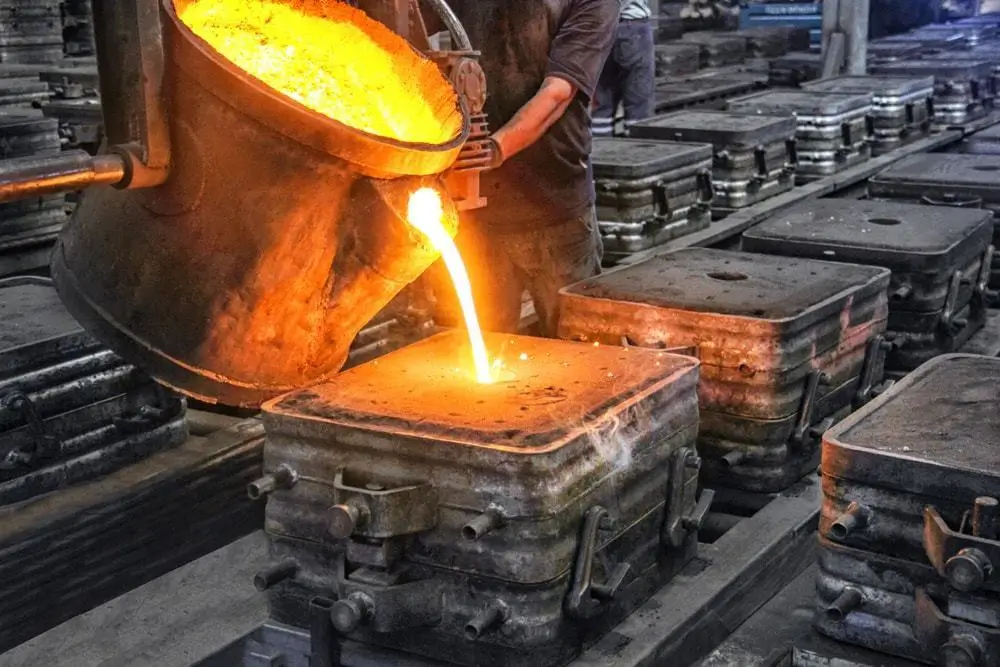
Die-casting process
Die casting injects molten metal into a hardened metal mold (a die) under high pressure. This method is great for mass-producing metal parts with complex, detailed designs.
In the die-casting process, metals such as aluminum, magnesium, or zinc are heated until they become molten. The next step is applying great pressure to force the melting metal into a steel frame. It has to seal all cracks to precise specifications. Following the cooling and solidification of the metal, it is feasible to use the cast portion. Due to the quick cooling process, die-cast items have a flat surface and exact dimensions.
Try Prolean Now!
Types of Die Casting
Die casting has multiple types for varied uses and manufacturing demands. The primary types—high pressure die casting and low pressure die casting—vary in process, cost, and quality. It makes it easier to choose based on component complexity, material, and volume.
Low Pressure Die Casting
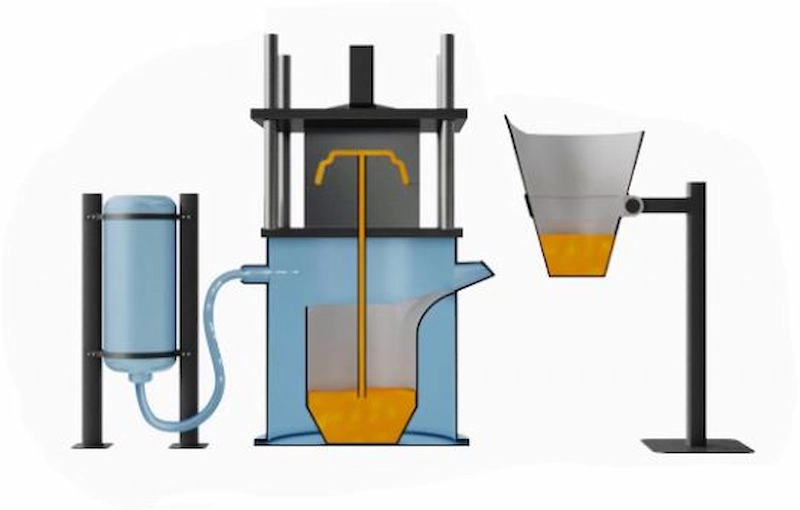
Low pressure casting setup
Low pressure die casting melted magnesium and aluminum alloys uses this technique. It carefully pours the alloys into the mold. A pressure of up to 0.8 bar can be injected. By regulating filling, this more gradual approach lessens turbulence and air entrapment. It produces superior quality castings. They are very smooth and have excellent dimensional accuracy. This casting’s small size and long fill times may hurt productivity. Low-pressure die casting suits complex parts, auto wheels, and aircraft components. Wheels and car frames need high structural integrity. So, they are often cast using low-pressure die casting.
High-Pressure Die Casting
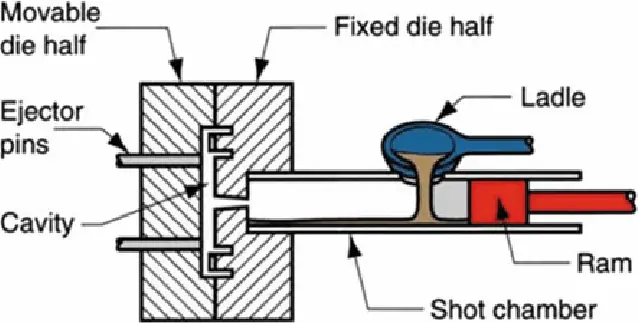
High pressure casting
The most used method is high-pressure die casting. It involves injecting the mold with molten metal at over 1000 bars of pressure. For many metals, this method makes thin-walled products. They have excellent finishes and tight tolerances. High pressures, on the other hand, may make porosity worse. Used to make tiny to medium-sized, intricate parts for cars, electronics, and appliances.
The most popular technique, high-pressure die casting, is great for mass-producing delicate, lightweight parts. It is widely used in sectors where accuracy is critical, like the auto and electronics industries.
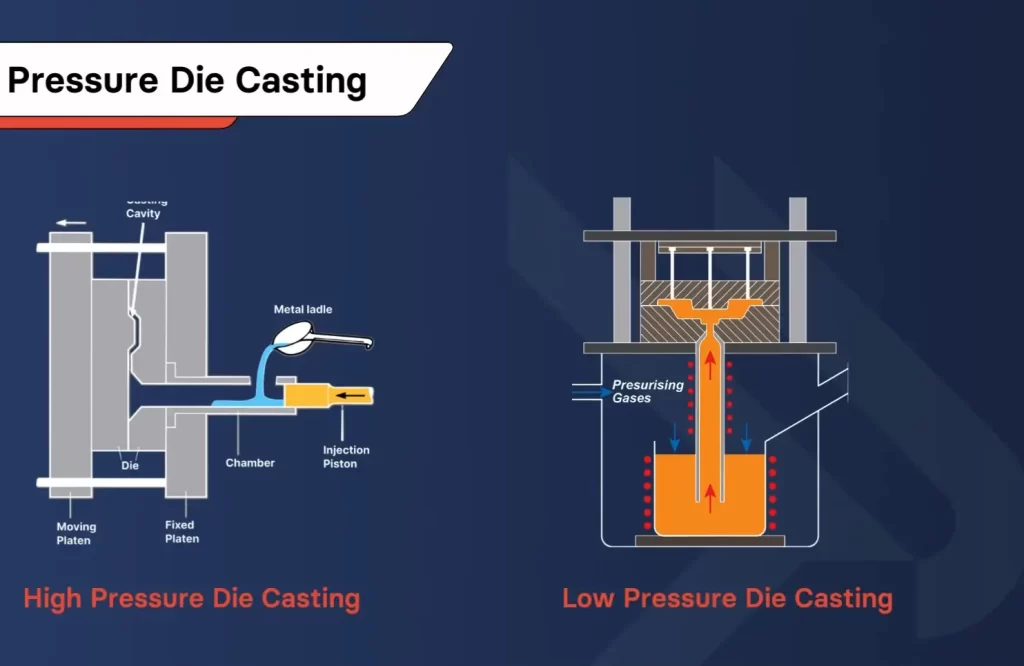
Pressure die casting types
Advantages of Die Casting
Die casting offers multiple major benefits.
Preciseness: One is its precision. The high-pressure die casting process allows it to produce intricate designs with fine details and tight tolerances. It guarantees uniformity in every aspect.
Performance: Die casting has minimal cycle times, which is an efficiency benefit. It works wonderfully for large-scale manufacturing.
Reusability: This process may be easily repeated. It will ensure that all components are almost similar. This is especially useful for large-scale production runs.
Durability: Die-cast components have excellent mechanical qualities, such as high strength and stiffness. Due to its low weight and high durability, aluminum die casting is an excellent material.
Smooth Finish: Die-cast parts provide a flawless surface because of their die casting process. You can save time and money by not having to machine or finish them too regularly.
Thin Walls: Die casting allows the production of sturdy, thin walls. It reduces the material used and the overall weight.
Adaptable: It is compatible with a wide range of metals and alloys. This works for many different kinds of tasks.
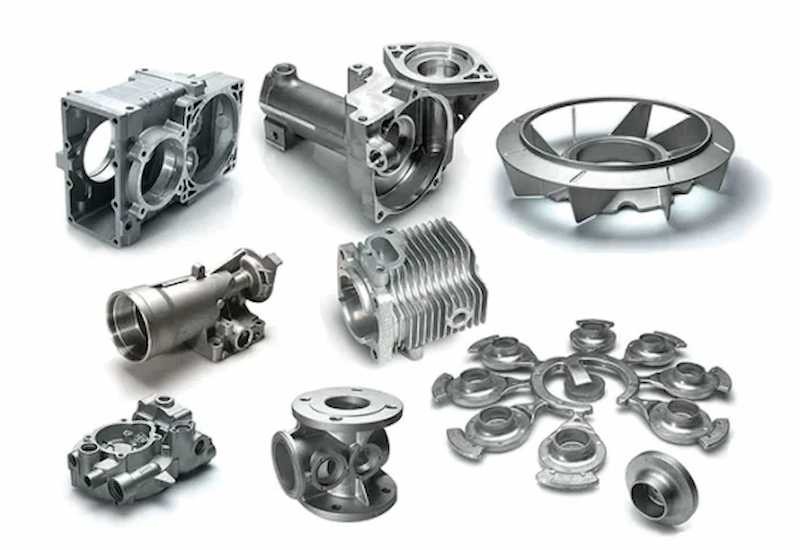
Die casting parts
What is Sand Casting?
In the sand casting process, molds are made by compressing and molding sand around a pattern. This leaves a cavity when the pattern is removed. This cavity is filled with molten metal using gravity, and then allowed to cool and harden. After the cast solidifies, it is removed from the sand mold. Then, the mold is brushed to remove any sand particles. Finally, excess material is trimmed. Sand casting allows intricate patterns and size flexibility while using many materials. But compared to die casting, it’s typically slower and less accurate.
Reusable die casting molds, often known as dies, are created from machined metal. This is accomplished by injecting molten aluminum between the molds under pressure. This results in a long-lasting, accurate part.
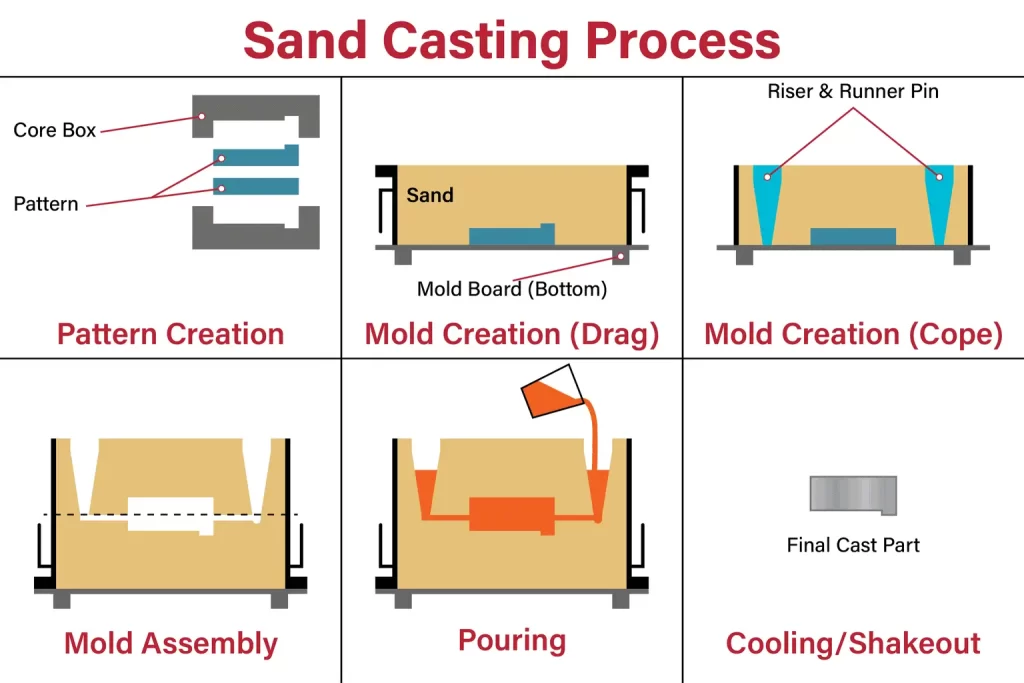
Die casting steps
Advantages of Sand Casting
There are a number of benefits to sand casting. Because of this, it is a popular choice for many applications:
- Low Tooling Costs: The sand casting process is an inexpensive process that requires little in the way of tools. For prototypes and small-run manufacturing, it works perfectly.
- Versatility: Sand casting works well with alloys, leading to material versatility. It is capable of casting a wide variety of metals, including aluminum, bronze, and iron.
- Flexibility: The technique accommodates a wide range of sizes, weights, and forms. It is the optimal choice for intricate or large-scale components.
- Modification: Sand molds are easily reshapable, which is a major plus. Modifications to the design may be made with minimal impact on tooling expenses.
- Capacity: The sand casting process is capable of producing big and complex components. For this, alternative processes, such as die casting, could not work as well or be too expensive.
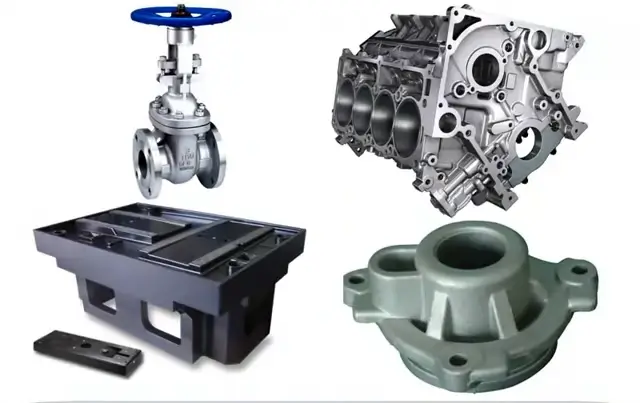
Die casting applications
Die Casting Vs Sand Casting: Major Differences
Mold materials are the key distinction between die casting and sand casting. As we’ve previously mentioned, a metal mold is utilized in die casting, whereas a sand mold is used in sand casting. The benefits and real-world applications of each method are detailed below.
| Factor | Sand Casting | Die Casting |
| Startup Time | It requires minimal preparation; a quick launch is based on the availability of the pattern. | The design, fabrication, and testing of metal dies to result in a longer startup time. |
| Upfront Cost | Minimal input cost; sand molds are easy and affordable to set up. | Specialized equipment and complicated die fabrication increase upfront expenses for high-volume runs. |
| Surface Finish | Rougher surface finish owing to the sand structure may require extra finishing. | High-quality, smooth finish; minimum or no post-processing necessary, with alternative textured surfaces available. |
| Wall Thickness | Usually, it results in thicker walls; it’s ideal for making changes or post-processing. | Allows for more precise, thinner walls, which means less material used and less weight. |
| Material Used for Mold | Sand molds are cheap and disposable. | High-volume manufacturing is cheaper using sturdy metal molds or dies. |
| Part Complexity | It can handle intricate and massive forms but has thicker walls and lower accuracy. | Ideal for thin walls and delicate decorations, pressure injection increases dimensional precision. |
| Material | It works with most metals, including iron, bronze, and aluminum. | Workable with copper alloys, non-ferrous metals, zinc, and magnesium. |
| Cost | Sand molds are cheaper to produce and replace for small sections. | It has a higher initial cost per item, but it becomes cost-effective when produced in large quantities. |
| Applications | Common in massive industrial pieces, machinery, and buildings without precise detail. | Used in automobiles, electronic devices, and consumer goods sectors that require accuracy and surface quality. |
| Production Volume | Ideal for restricted quantities and prototyping; efficient for small to medium runs. | Ideal for mass manufacturing; faster per part despite lengthy setup. |
Try Prolean Now!
Final Thought: Die Casting vs Sand Casting?
The decision to select between die casting vs sand casting depends on the specific manufacturing requirements. Die casting is an efficient method for mass-producing aluminum and other lightweight materials. This process produces complicated items with excellent surface quality and precision. The consumer electronics and automobile industries will find it to be a great fit. Beauty and consistency are important to them.
Sand casting, on the other hand, works better for exclusive, low-quantity items. You may choose the metal and design at your own pace. It is more cost-effective than die casting and can produce larger, more complicated shapes. Therefore, it is ideal for use in manufacturing components and machines. Factors to think about when selecting a die casting service or company include the part’s complexities, volume, and the various metal types that are compatible with each option. The following approach will assist you in identifying the most suitable casting for your project and budget.
FAQs
Q.1 Which is cheaper: die casting or sand casting?
Sand casting is cheaper than die casting for tooling and other process needs. Sand casting requires little capital and is better for budget-constrained jobs. Die casting is more sustainable than its alternative since it saves money over time.
Q.2 Which casting process benefits mass manufacturing financially?
Die casting is cheaper for mass production because of its shorter cycle times and less finishing.
Q.3 Which is better, sand casting vs die casting?
Die and sand castings serve various purposes and provide different outcomes. The die casting vs sand casting dispute has no obvious winner, but its justification is clear. Either method can work, depending on your needs.
Q.4 What should I consider when selecting die casting manufacturers?
You should look for die casting manufacturers that are proficient in a variety of casting types, have robust quality control procedures, and can handle your order volume and accuracy specifications. Having these things in place will guarantee a solid collaboration and excellent outcomes.
Q.4 What is the biggest advantage of die casting vs sand casting?
Die casting is best for complicated projects that demand great precision and a narrow margin of error. However, sand casting is ideal for big items because of its size flexibility. Sand casting’s alloy friendliness and ease of usage are its major advantages, not its flexibility or inexpensive cost.
Sand casting is a good die casting alternative. It works well for smaller numbers of larger, simpler pieces or unique objects created from non-die casting materials.

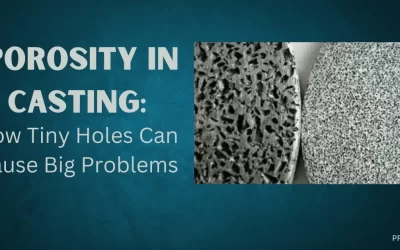
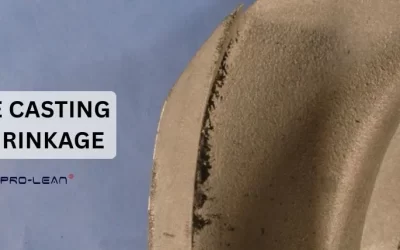
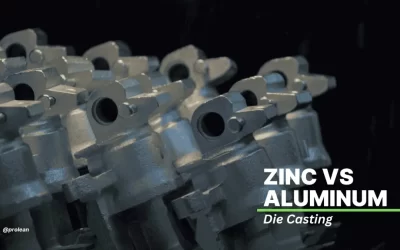
0 Comments